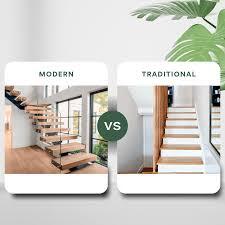Walk through any modern neighborhood and you’ll see sleek siding, open-concept living rooms, and trendy kitchen islands. But look more closely and you’ll also find something else: stairs. Front stoops. Split-level entries. Steep basement access. Second-story master bedrooms.
Despite advances in home technology, accessibility in design has lagged behind—and nowhere is that more obvious than with stairs.
Even in new construction, where you might expect universal design principles to be baked into the plan, vertical mobility is often overlooked. The assumption is always the same: stairs are fine, and they’ll be fine forever.
But for millions of Americans, that assumption falls apart sooner than expected.
When Stairs Stop Being Background
Most people take stairs for granted—until the day they become a barrier. Sometimes it’s sudden: a fall, an injury, a medical diagnosis. Other times, it’s gradual—fatigue when climbing, dizziness on descent, or the simple discomfort of knees that no longer cooperate.
This transition happens not just to individuals but to households. A two-story family home slowly shrinks. The second floor is visited less. The basement becomes inaccessible. Entire areas of the house become dead space, left behind not because of choice, but because of pain or fear.
What was once a symbol of style or space becomes a wall.
The Missed Opportunity in Home Planning
Stairs dominate the floor plans of most suburban homes. They cut through foyers, lead to bonus rooms, connect garages to laundry zones. Yet few builders integrate vertical mobility solutions during the design phase.
Why? Because accessibility is still considered a future problem. Something to “figure out later.” And while ramps at entryways are becoming more common, internal navigation is left untouched—often until the need is urgent.
That’s where solutions like stair lift installation enter the conversation—not just as a fix, but as a design rethink.
Rethinking the Role of Stair Lifts
The image of a stair lift chair still carries misconceptions. Many envision clunky devices bolted to walls, interrupting the flow of the home. But in truth, modern stair lifts are discreet, foldable, and highly adaptable to various stair configurations.
More importantly, they serve a function that design currently fails to address: they allow people to access their entire home safely.
In this light, stair lifts aren’t just tools for the elderly—they’re elements of smarter architecture. They allow homes to grow with their residents instead of forcing people to downsize, renovate, or relocate.
The Hidden Costs of Delay
When accessibility isn’t planned for early, the costs are higher later. Emergency renovations, temporary workarounds, and rushed installations often result in disruption and dissatisfaction.
On the other hand, early adoption of vertical mobility solutions allows for thoughtful placement, optimized aesthetics, and lower long-term cost.
Installing a Bruno Stair Lift in Virginia or similar device isn’t just about present needs—it’s about future-proofing a home for aging, illness, guests with mobility challenges, or unexpected changes in health.
It’s easier, and often less expensive, to integrate these systems when there’s time to plan.
Accessibility Is Not Just a Medical Concern
When the topic of stair lifts comes up, it’s often framed in medical or age-related language. But accessibility is broader than that.
It’s about quality of life.
Parents recovering from surgery. Grandparents visiting for the holidays. Children with short-term injuries. Even pets who need assistance getting from one floor to another.
These are daily life scenarios that happen in nearly every household at some point. Planning for these moments with inclusive features like stair lift chairs is not only practical—it’s compassionate.
Rewriting the Standard of Home Comfort
Imagine a home where comfort is not defined by square footage, but by usability. Where every room is reachable. Every step is safe. Every person, regardless of mobility, feels equally welcomed.
That’s the future many architects, builders, and homeowners are beginning to recognize. And brands like Stairlift Virginia are part of this quiet evolution—not through sweeping redesigns, but through the thoughtful integration of mobility where it matters most.
It’s not about retrofitting disaster. It’s about designing dignity.
From Luxury to Logic
There was a time when dishwashers were considered indulgent. Now, they’re standard. The same goes for smart thermostats, security systems, and built-in wireless networks.
Stair lifts are headed down the same path.
As more homeowners and contractors become aware of their benefits—not just for older adults but for families of all types—the question won’t be “Should we install one?” but “Why wouldn’t we?”
The perception of the Bruno Stair Lift as a specialty item is shifting. People are beginning to understand it as just another way to make a house more livable. Like wider doorways, lever-style door handles, or motion-activated lighting.
These are small adjustments with enormous payoffs.
Moving from Reactive to Proactive
Homeowners often wait until a mobility issue appears before considering changes. But proactive planning creates better outcomes. When you choose stair lift installation before there’s a crisis, the experience is smoother, the options are wider, and the results are more seamless.
Rather than reacting to limitations, proactive installations are about enabling freedom. They empower people to stay in their homes longer. To navigate safely, comfortably, and independently.
It’s not a sign of decline—it’s a sign of design maturity.
Final Thoughts: Time to Elevate the Conversation
It’s time for homeowners, builders, and designers to ask a better question—not just “Can I get upstairs?” but “How will I continue to move through this home five, ten, or twenty years from now?”
Accessibility should not be a specialty feature. It should be a foundational consideration.
And in that vision of the home—one that adapts, welcomes, and supports—stair lifts have a natural place.
They’re not just for solving problems. They’re for expanding possibility.






